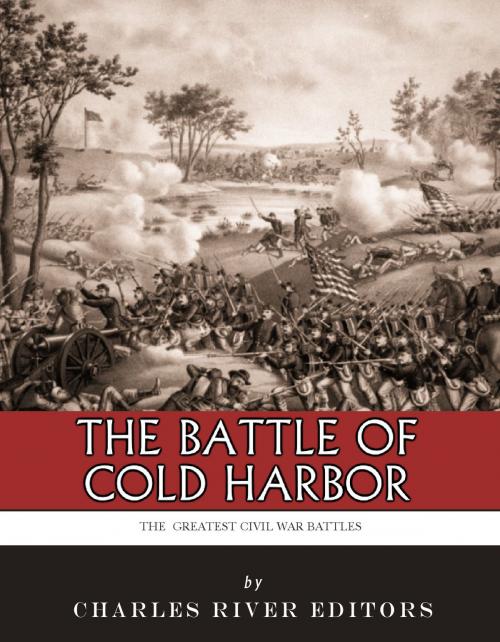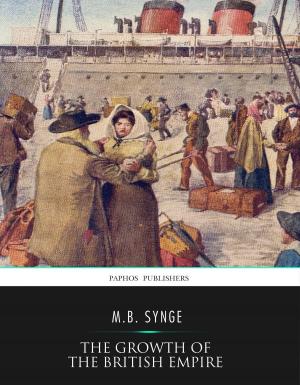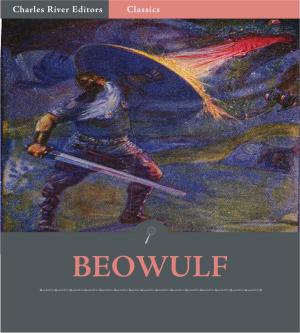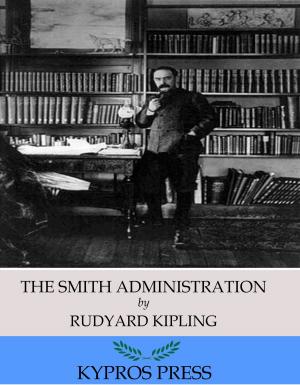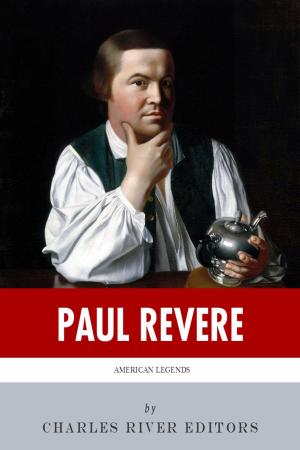The Greatest Civil War Battles: The Battle of Cold Harbor
Nonfiction, History, Americas, United States, Civil War Period (1850-1877), Military| Author: | Charles River Editors | ISBN: | 9781475323290 |
| Publisher: | Charles River Editors | Publication: | April 25, 2013 |
| Imprint: | Language: | English |
| Author: | Charles River Editors |
| ISBN: | 9781475323290 |
| Publisher: | Charles River Editors |
| Publication: | April 25, 2013 |
| Imprint: | |
| Language: | English |
*Includes pictures of the battle's important generals.*Includes several maps of the battle.*Includes accounts of the fighting written by generals and soldiers.*Includes a Bibliography for further reading.*Includes a Table of Contents.“Every corpse I saw was as black as coal. It was not possible to remove them. They were buried where they fell. ... I saw no live man lying on this ground. The wounded must have suffered horribly before death relieved them, lying there exposed to the blazing southern sun o' days, and being eaten alive by beetles o' nights.” Frank Wilkeson, Union artillery officerThe Overland Campaign that pitted Robert E. Lee against Ulysses S. Grant is one of the most famous campaigns of the Civil War, and May 1864 witnessed the Civil Wars greatest chess match as Lee skillfully blocked Grants attempts to destroy the Army of Northern Virginia only to watch his tenacious opponent keep advancing south toward Richmond. Lee and Grant fought to a standstill in the Wilderness, Spotsylvania, and along the North Anna, inflicting about 30,000 casualties on each others armies. By the time the two armies reached Cold Harbor near the end of May 1864, Grant incorrectly thought that Lees army was on the verge of collapse. Though his frontal assaults had failed spectacularly at places like Vicksburg, Grant believed that Lees army was on the ropes and could be knocked out with a strong attack. The problem was that Lees men were now masterful at quickly constructing defensive fortifications, including earthworks and trenches that made their positions impregnable. While Civil War generals kept employing Napoleonic tactics, Civil War soldiers were building the types of defensive works that would be the harbinger of World War Is trench warfare.On June 3, 1864, sensing he could break Lees army, Grant ordered a full out assault at dawn in the hopes of catching the rebels before they could fully entrench. Although the story of Union soldiers pinning their names on the back of their uniforms in anticipation of death at Cold Harbor is apocryphal, the frontal assault on June 3 inflicted thousands of Union casualties in about half an hour. In just minutes, 7,000 Union soldiers were killed or wounded as 30,000 Confederate soldiers successfully held the line against 50,000 Union troops, losing just 1,500 men in the process. With another 12,000-15,000 casualties suffered at Cold Harbor, Grant had suffered about as many casualties in a month as Lee had in his entire army at the start of the campaign. Grant later admitted, "I have always regretted that the last assault at Cold Harbor was ever made...No advantage whatever was gained to compensate for the heavy loss we sustained." But even though Cold Harbor is remembered almost solely for that futile charge, the armies were in that vicinity for nearly 2 weeks, and most importantly, Lee once again failed to stop Grants advance. Grants casualties may have stunned Americans in 1864, but Cold Harbor would be the last major battle of the Overland Campaign because Grant would reach his objective by stealing a march on Lee to cross the James River, beginning the actions that would lead to the siege of Petersburg. The Greatest Civil War Battles: The Battle of Cold Harbor comprehensively covers the campaign and the events that led up to the battle, the fighting itself, and the aftermath of the battle. Accounts of the battle by important participants are also included, along with maps of the battle and pictures of important people, places, and events. You will learn about the Battle of Cold Harbor like you never have before, in no time at all.
*Includes pictures of the battle's important generals.*Includes several maps of the battle.*Includes accounts of the fighting written by generals and soldiers.*Includes a Bibliography for further reading.*Includes a Table of Contents.“Every corpse I saw was as black as coal. It was not possible to remove them. They were buried where they fell. ... I saw no live man lying on this ground. The wounded must have suffered horribly before death relieved them, lying there exposed to the blazing southern sun o' days, and being eaten alive by beetles o' nights.” Frank Wilkeson, Union artillery officerThe Overland Campaign that pitted Robert E. Lee against Ulysses S. Grant is one of the most famous campaigns of the Civil War, and May 1864 witnessed the Civil Wars greatest chess match as Lee skillfully blocked Grants attempts to destroy the Army of Northern Virginia only to watch his tenacious opponent keep advancing south toward Richmond. Lee and Grant fought to a standstill in the Wilderness, Spotsylvania, and along the North Anna, inflicting about 30,000 casualties on each others armies. By the time the two armies reached Cold Harbor near the end of May 1864, Grant incorrectly thought that Lees army was on the verge of collapse. Though his frontal assaults had failed spectacularly at places like Vicksburg, Grant believed that Lees army was on the ropes and could be knocked out with a strong attack. The problem was that Lees men were now masterful at quickly constructing defensive fortifications, including earthworks and trenches that made their positions impregnable. While Civil War generals kept employing Napoleonic tactics, Civil War soldiers were building the types of defensive works that would be the harbinger of World War Is trench warfare.On June 3, 1864, sensing he could break Lees army, Grant ordered a full out assault at dawn in the hopes of catching the rebels before they could fully entrench. Although the story of Union soldiers pinning their names on the back of their uniforms in anticipation of death at Cold Harbor is apocryphal, the frontal assault on June 3 inflicted thousands of Union casualties in about half an hour. In just minutes, 7,000 Union soldiers were killed or wounded as 30,000 Confederate soldiers successfully held the line against 50,000 Union troops, losing just 1,500 men in the process. With another 12,000-15,000 casualties suffered at Cold Harbor, Grant had suffered about as many casualties in a month as Lee had in his entire army at the start of the campaign. Grant later admitted, "I have always regretted that the last assault at Cold Harbor was ever made...No advantage whatever was gained to compensate for the heavy loss we sustained." But even though Cold Harbor is remembered almost solely for that futile charge, the armies were in that vicinity for nearly 2 weeks, and most importantly, Lee once again failed to stop Grants advance. Grants casualties may have stunned Americans in 1864, but Cold Harbor would be the last major battle of the Overland Campaign because Grant would reach his objective by stealing a march on Lee to cross the James River, beginning the actions that would lead to the siege of Petersburg. The Greatest Civil War Battles: The Battle of Cold Harbor comprehensively covers the campaign and the events that led up to the battle, the fighting itself, and the aftermath of the battle. Accounts of the battle by important participants are also included, along with maps of the battle and pictures of important people, places, and events. You will learn about the Battle of Cold Harbor like you never have before, in no time at all.
